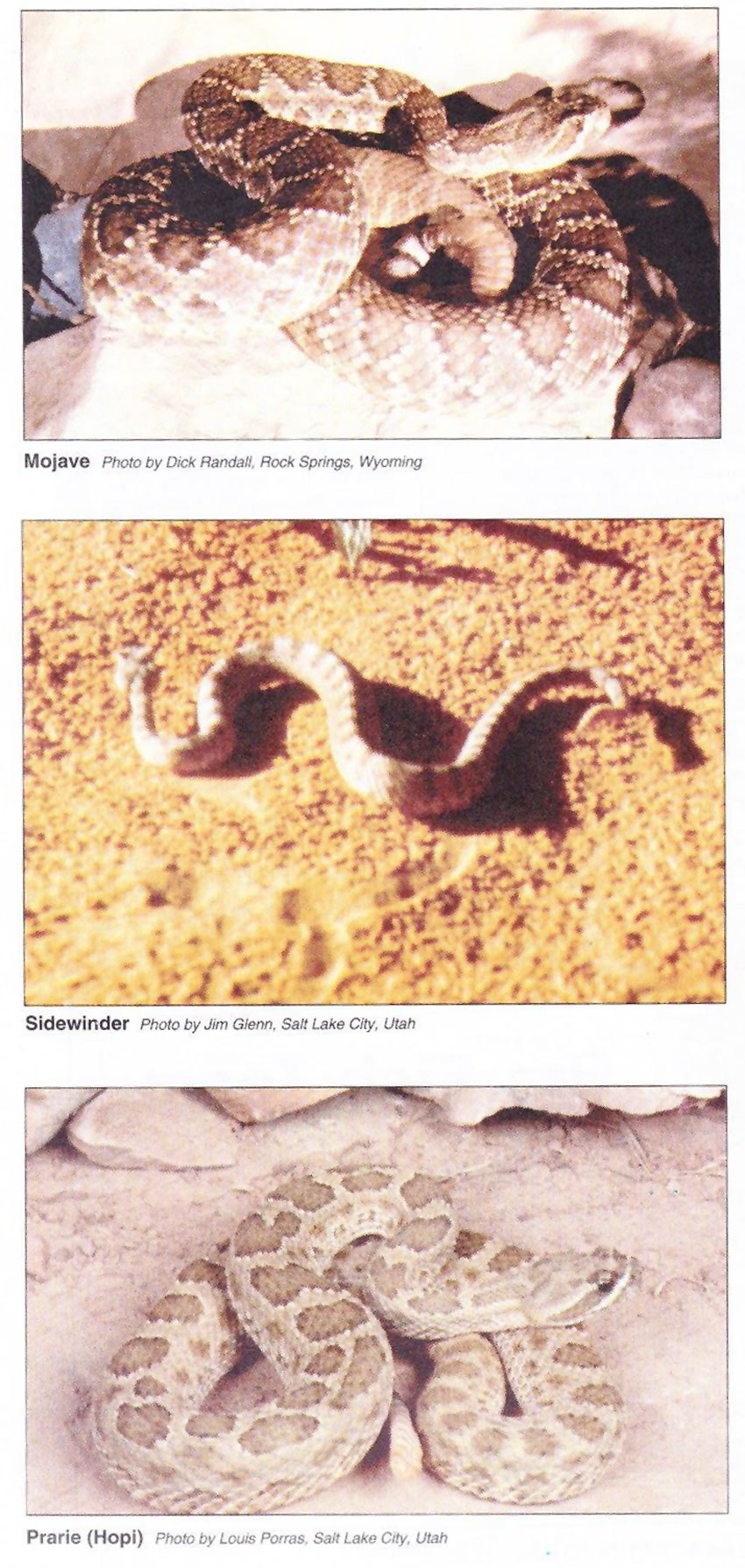Utah Fishing And Outdoors - May 16-31, 1993

1. Rattlesnakes are the only poisonous snake in Utah. They live in virtually every part of the state, including in and around the population centers.
2. Six kinds of rattlers are found here, as shown in the photos on this page. The Great Basin is the most common, and accounts for most sightings and bites. Rattlers range in color from greenish near Bear Lake through all shades of brown and greys to pink near Zion Park.
3. Some other snakes have markings somewhat similar to rattlers, as shown in the rattlesnake-gopher snake comparison picture at bottom right. Rattlers can be readily distinguished because they always have a spade»shaped head (as opposed to the rounded head found on the gopher and other Utah snakes). Other distinguishing factor: the rattles (or button on young snakes); rattlesnakes carry their tail off the ground when they crawl (while other snakes let it drag on the ground); the skin of rattlers is dull (compared to the glossy skin of other snakes).
4. The biggest fallacy about rattlers is that they are vicious, that they will chase you down and bite you. Wrong. Rattlers will flee from humans if given a chance. They don't go around looking for a fight. But if cornered or pursued, they will eventually fight. Rattlers can't crawl as fast as you can run - you can easily get away if you try. And the snakes can't "jump" at you. When they strike, even from a coiled position, a good part of their body has to remain on the ground. That means they can only bite something which is close to them.
5. Rattlers have poor eyesight. They rely on ground vibrations and smell. If you hear a rattler buzz, and you know where it is, simply move away in the opposite direction. If you can't tell where the snake is, just hold still. The rattler will probably stop buzzing and crawl away from you. Or you will be able to locate the snake and move away.
6. Rattlers give birth to their young alive. They don‘t lay eggs. Baby rattlers come equipped with venom, and are dangerous. Leave them alone.
7. Don't handle dead snakes and don‘t try to open their mouths to see the fangs. If you poke yourself with a fang you could get an infection but not poisoned.
8. Rattlesnake bites are usually not deadly. Since 1900, only five people have died from rattlesnake bites in Utah. During the same time, ten people have died from bee stings, and four from spider bites. No deaths have been attributed to Gila monsters (our only poisonous lizard) and one person died from a suspected scorpion bite.
9. If you are bitten, stay calm and get to a doctor as soon as possible. If you are hiking and you are away from your vehicle, just hike slowly and deliberately back and go get help. Hopefully, you will have a companion with you.


